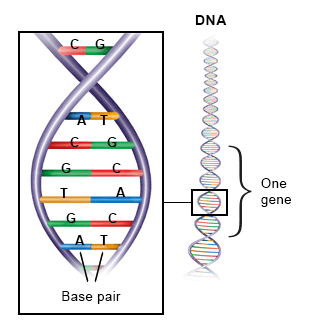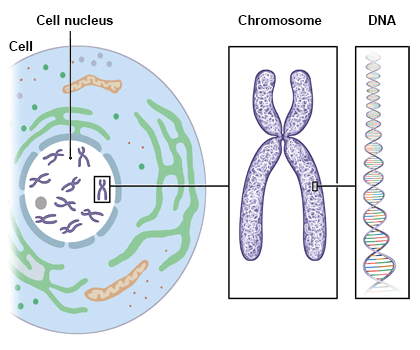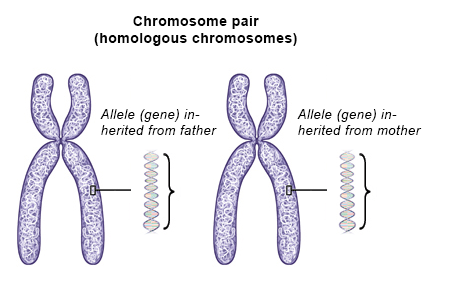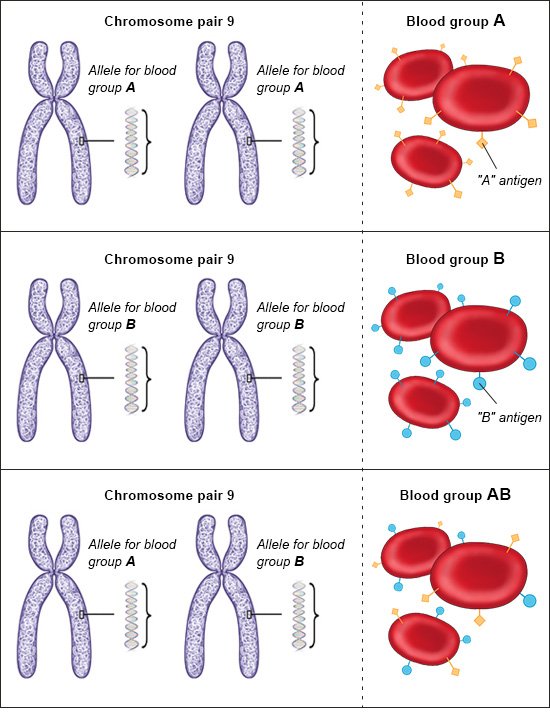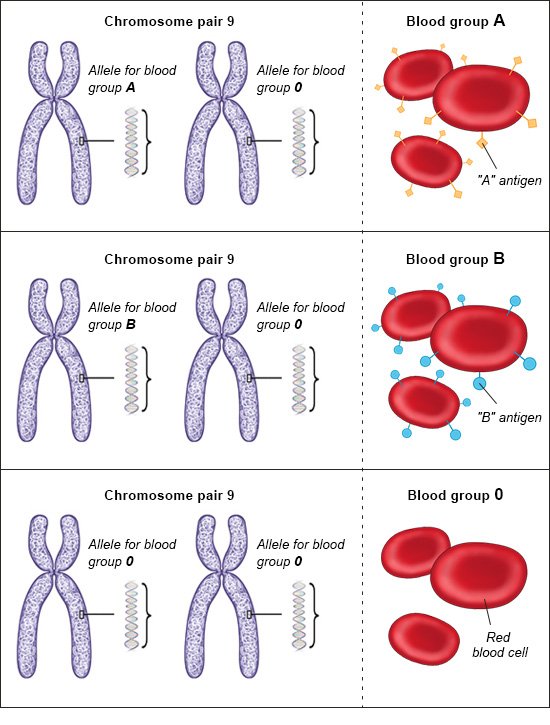What carries the genetic information?
Genetic information is all of the information stored in our DNA. DNA stands for “ deoxyribonucleic acid.”
The strands of DNA look like a twisted ladder, known as a double helix. Each step of this ladder is made up of two bases. There are four different bases:
- adenine (A)
- thymine (T)
- guanine (G)
- cytosine (C)
The different types of bases result in different kinds of "ladder steps."
The order (sequence) of the different steps produces a code of letters. This code serves as building instructions for the cell to make proteins. The sequence of genetic information that contains the building instructions for a specific protein is called a gene. Genes vary in length, from a few hundred to over 100,000 bases. The DNA typically has sections before each gene that act as switches. These sections are responsible for the fact that certain genes are only activated in muscle cells while others are only activated in liver cells, for example.
When different genes are “read,” different proteins are made – each with their own function. For instance, some proteins are used as enzymes or hormones to regulate specific processes in the body. Other proteins are used as building blocks in the body or serve to transport things in the bloodstream. The cell nucleus contains a lot of proteins, too: Some help to read the DNA code, while others help to support the structure of the DNA.
